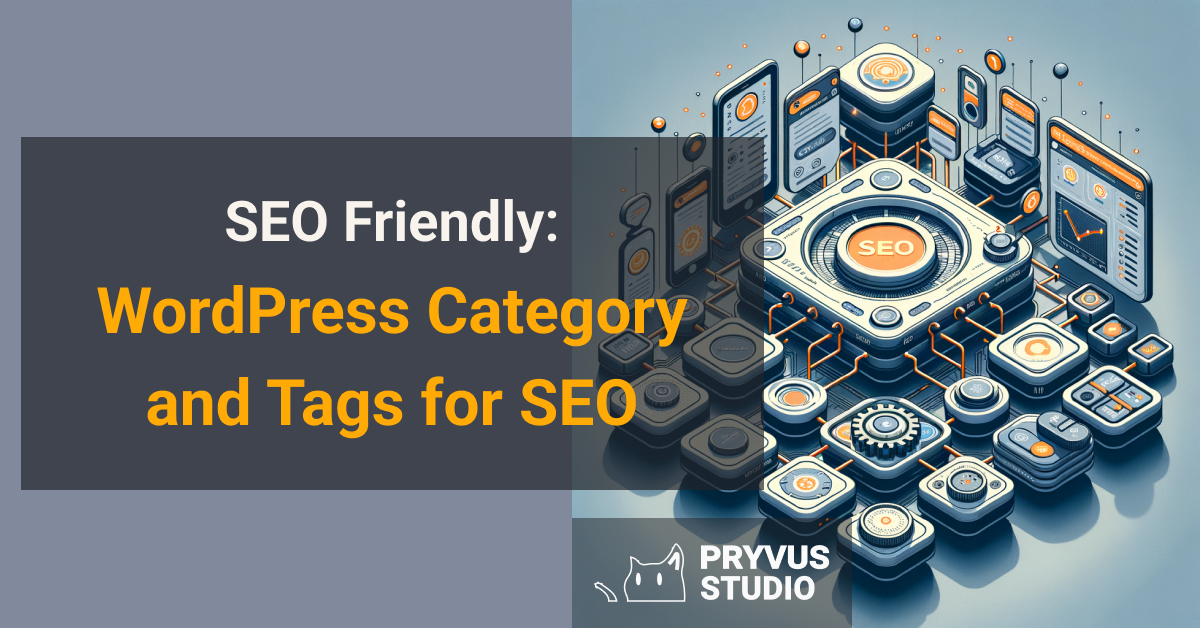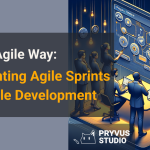Notice: Only variables should be passed by reference in /home/ploi/pryvus.com/public/wp-content/themes/pryvus/template-parts/content-post.php on line 12

Understanding WordPress categories and tags is crucial for SEO success.
By optimizing these elements, along with your site’s structure and utilizing advanced features, you can significantly enhance your website’s visibility and user experience. This article promises practical advice for leveraging WordPress to improve your SEO efforts.
In this article, you will learn:
- How to effectively use categories and tags for SEO
- Key strategies for optimizing your WordPress site structure
- Advanced WordPress features that boost SEO
Understanding WordPress Categories and Tags for SEO
Let’s dive into the world of WordPress, focusing on categories and tags. These are key for SEO. Why? They organize content, making your site user-friendly. This, in turn, boosts SEO rankings.
Categories vs. Tags: What’s the Difference?
Categories group your content into broad topics. Think of them as your website’s table of contents. Tags, on the other hand, are specific keywords related to individual posts. They’re like the index at the back of a book.
Why Optimize Categories and Tags?
Optimizing these elements can drastically improve site navigation and SEO. It helps search engines understand and index your content better. Plus, it enhances user experience by making it easier to find related content.
Best Practices for Category and Tag Optimization
- Keep categories broad but relevant.
- Use tags to highlight specific topics mentioned in your posts.
- Limit the number of categories and tags to prevent content dilution.
- Ensure all categories and tags are included in your site’s XML sitemap.
Utilizing Categories and Tags for Improved SEO
By strategically using categories and tags, you can enhance your website’s structure. This makes it easier for search engines to crawl and index your site. Remember, a well-structured site is more likely to rank higher in search results.
Pryvus Studio, with its vast experience in custom software development, emphasizes the importance of a well-organized website. This not only aids in SEO but also provides a seamless user experience.
Categories and tags play a crucial role in content strategy. They help in organizing content efficiently, which is vital for any website aiming to rank well in search results. By following the best practices outlined above, you can optimize your WordPress site for better visibility and engagement.
Optimizing Your WordPress Site Structure for SEO
When it comes to boosting your site’s SEO, the structure of your WordPress site plays a pivotal role. A well-organized site not only helps search engines crawl your content more effectively but also enhances user experience. This, in turn, can significantly impact your site’s search engine rankings.
A solid site structure is the backbone of your SEO strategy.

Start by creating a logical hierarchy of your content. This means organizing your posts and pages in a way that’s intuitive both for search engines and visitors. Use categories and subcategories effectively, and ensure your tagging strategy is precise.
Furthermore, your URLs should be clean and descriptive. WordPress allows you to customize your permalink structure. Choose a format that includes the title or keywords relevant to the page content. This not only aids in SEO but also improves user navigation.
Implementing breadcrumbs is another strategy that shouldn’t be overlooked. Breadcrumbs guide users through your site, showing them their current location and how to return to previous pages. This feature also aids search engines in understanding the structure of your site, further boosting your SEO efforts.
Lastly, don’t forget about mobile optimization. With Google’s mobile-first indexing, ensuring your WordPress site is responsive and loads quickly on mobile devices is more crucial than ever. Pryvus Studio emphasizes this in their approach, highlighting the importance of speed, security, and SEO optimization in web development.
Incorporating advanced WordPress features like caching, image optimization, and the use of a Content Delivery Network (CDN) can also contribute to a better-structured site. These elements enhance site speed and performance, key factors in SEO rankings.
By following these steps and focusing on a well-structured site, you are setting a solid foundation for your SEO success. Remember, SEO is a long-term strategy, and consistent effort and optimization are key to achieving and maintaining high rankings.
Enhancing Your Website’s SEO with Advanced WordPress Features
When it comes to SEO, WordPress offers a plethora of advanced features that can significantly boost your site’s performance. From plugins that enhance speed and security to tools that improve content visibility, these features are designed to make your website more search engine friendly.
Advanced WordPress features can take your SEO efforts to the next level, making your site faster, safer, and more visible to search engines.
One key feature is the use of SEO plugins like Yoast or All in One SEO. These tools help you optimize your content, generate sitemaps, and manage meta tags effectively. Additionally, leveraging caching plugins can drastically improve your website’s loading times, a critical factor for SEO.
Another area where WordPress excels is in its responsive design capabilities. With mobile-first indexing, ensuring your site is mobile-friendly is non-negotiable. WordPress themes are inherently responsive, making it easier to cater to mobile users.
Security also plays a vital role in SEO. Websites that are deemed insecure by search engines can suffer in rankings. WordPress offers various security plugins that help protect your site from malware and hacks, ensuring your SEO efforts aren’t undermined by security issues.
Finally, integrating social media can amplify your SEO efforts. WordPress makes it easy to add social sharing buttons to your content, increasing its reach and potential for backlinks. This integration not only enhances user engagement but also signals to search engines that your content is valuable.
By utilizing these advanced WordPress features, you can significantly enhance your website’s SEO performance. While the basics are crucial, these additional steps can give you an edge in the highly competitive digital landscape.
Tracking and Improving Your SEO Efforts
Once you’ve optimized your WordPress site with categories, tags, and advanced features, the next step is tracking and improving your SEO efforts. It’s not just about making changes; it’s about understanding their impact. How do you know if your strategies are working? The answer lies in effective tracking and continuous improvement.
Effective SEO tracking and improvement can significantly boost your website’s visibility and performance.

Start by setting up Google Analytics and Google Search Console. These tools provide insights into your website’s traffic, user behavior, and how Google views your site. Look for trends in traffic sources, page views, and bounce rates. Analyze which content performs best and why.
Next, focus on keyword rankings. Use SEO tools like SEMrush or Ahrefs to track how your posts rank for targeted keywords. Monitor your progress over time, and adjust your content strategy based on what’s working.
Don’t overlook the importance of backlinks. They’re a key factor in SEO success. Tools like Majestic or Moz can help you analyze your backlink profile. Aim to increase high-quality backlinks from reputable sites.
Lastly, engage with your audience. Use comments, social media, and surveys to gather feedback. This can provide valuable insights into user needs and preferences, guiding your content and SEO strategies.
Remember, SEO is an ongoing process. Regularly review your strategies and metrics. Be ready to adapt to new trends and algorithm updates. With dedication and the right tools, you can continually enhance your site’s SEO performance.
Leveraging WordPress for Your SEO Success
Now that you’re armed with knowledge about WordPress categories and tags, site structure, advanced features, and tracking your SEO efforts, it’s time to put it all into action. Remember, the goal is to create a user-friendly, well-structured website that search engines love. Here are some key takeaways:
- Keep your categories relevant and your tags specific.
- Ensure your site structure is logical and includes effective use of breadcrumbs.
- Leverage advanced WordPress features like SEO plugins and caching.
- Don’t forget the importance of mobile optimization and security plugins.
- Regularly track and improve your SEO efforts using tools like Google Analytics.
SEO is a journey, not a destination. It requires continuous effort, experimentation, and learning. But with WordPress as your platform, you’ve got a powerful tool at your disposal. Use it wisely, and you’ll see your site climb up the search engine rankings.
Feeling overwhelmed? Don’t worry. Pryvus Studio is here to help. We specialize in optimizing WordPress sites for SEO. Let’s work together to boost your site’s visibility and engagement. Contact us today to get started on your journey to SEO success.


